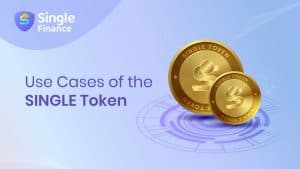We hope you’re just as excited as we are now that the Liquidity Pool Time Machine is officially live! Our Time Machine is the first revolutionary liquidity mining database in the DeFi world. It provides you with original metrics that will pick pools that are best customized to your needs. In this article, we will help you navigate through the Time Machine.
What is the Time Machine?
Before we dive into how you can navigate the Time Machine to your advantage, let’s first talk about what it is. The Time Machine collects historical data, then breaks down all the data into a digestible annualized P&L, trading fee rewards, DEX reward tokens, and value change due to token price impact. The database is one of the first to ever record such performance data in the world of DeFi, and all in USD! Do note, however, the product does not provide any investment advice, and past data is not indicative of future results.
Why do we need the Time Machine?
With so many protocols and liquidity pools available in DeFi, it can be challenging to do research – especially without an aggregated database. This means information is difficult to find and not user-friendly for those looking to step foot into the space. To mitigate this issue, we’ve come up with the Time Machine to better simplify and analyze all the data available in DeFi!
Intrigued? Keep reading to learn more!
Step 1: Getting Started
To start, go to the Time Machine homepage. On this homepage, you will discover a variety of filters and data that will help you make better DeFi decisions
Step 2: Choosing a Chain
On the left-hand column, you will see the available chains that you can pick from. Choose all, or whichever chain that you would like to analyze. By default, results are displayed by descending order in terms of Liquidity.
Step 3: Choosing Filters
In the filter section, you can choose what type of filters you would like to apply ranging from DEX, liquidity, asset type, and different metrics. Learn more about our original metrics here. You may also search the pairs by token name.
Step 4: Sorting Results
Once you’ve chosen your filters, you will then see a table with all the available data for different LP pairs. Sort by clicking on the individual item in the header row: # (rank), total AROI over the considered timeframe, liquidity (USD), 24-hours volume (USD), 30-days HHR (Harvest Healthiness Ratio), and fees growth rate.
Step 5: Viewing the Data with Impermanent Loss and Price Effect
The returns account for price effects or impermanent loss. Price effect refers to the net equity value change due to changes in asset prices in the liquidity pool, compared to your principal, focusing on actual price change. Impermanent loss refers to the “loss” from the change in the LP-tokens’ price change, compared with simply holding the assets on hand, focusing on relative price change. See more details here.
Step 6: Diving into a Specific Liquidity Pool
Click into your desired LP pair from the main panel. To begin using the Time Tunnel, you may customize the timeframe and principle value to match your inquiry. Results are refreshed automatically.
Step 7: Show or Hide Metrics
Simulated Performance is presented in two bar charts: the monetary value of return and the annualized rate in total. To view the trend with or without any of the individual breakdowns, click on the legends to show or hide them. See explanations of each breakdown here.
Step 8: Switch between ROI and AROI
The return summary on the right shows your return in USD. Default percentage is the AROI (Annual Return on Investment), and you may switch to view the actual ROI (Return on Investment) by clicking the change button.
Now that you know the basics of how to use the Time Machine, go out there and find your favorite LP pair! Let us know your thoughts on any of our social media channels, and stay tuned for more guides on Time Machine and more!


